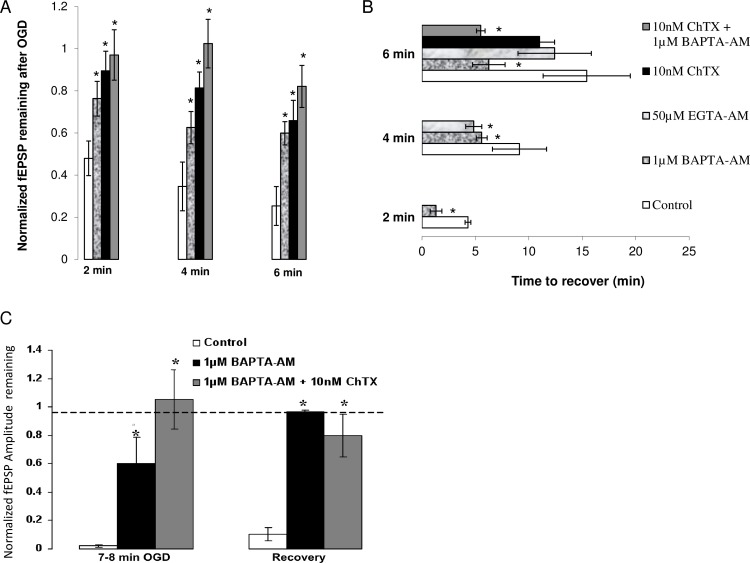Fig 9. (A) Effect of calcium chelators and K channel antagonist, ChTX on fEPSP during OGD.
1μM BAPTA-AM increases the amount of evoked neurotransmission remaining after 2 min (n = 7), 4 min (n = 6) and 6 min (n = 5) of ischemia relative to control (n = 7, 5, 5, respectively). Similarly, the amplitude of fEPSPs remaining after 2 min, 4 min, 6 min of OGD (n = 6) is increased after administration of 10 nM ChTX. Combining ChTX and BAPTA-AM led to almost no change in fEPSP amplitude up to 6 min of OGD (n = 6). (B) Effect of calcium chelators, and BK channel antagonist on recovery of fEPSP after OGD. BAPTA-AM (1 μM) decreases recovery time from 2 min (n = 7), 4 min (n = 6) and 6 min (n = 3) of in vitro OGD compared to control (n = 7, 5, 5, respectively). EGTA-AM (50μM) shows similar effects to BAPTA-AM (1μM) by decreasing time needed for electrophysiological recovery after 4 min of OGD (n = 6) but not after 6 min (n = 7). ChTX (10 nM) did not significantly decrease recovery time after 6 min of ischemia (n = 4) but a combination of BAPTA-AM (1 μM) and ChTX(10 nM) significantly decreased recovery time after 6 min of OGD (n = 6). (C) BAPTA-AM and BAPTA-AM + ChTX promote increased tissue resistance to a long ischemic episode. BAPTA-AM (1 μM) increases the amount of fEPSP remaining after 8 min of OGD and leads to full recovery after 40 min of reperfusion post ischemia (n = 3) when control tissue has surpassed the point of functional recovery (n = 4). A combination of BAPTA-AM (1 μM) and ChTX (10 nM) leads to almost no change in fEPSP amplitude after prolonged OGD and leads to almost full recovery after 40 min of reperfusion (n = 5). Data plotted as mean ± SE. *p < 0.05, ANOVA, all relative to control condition.

